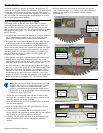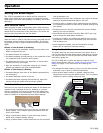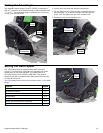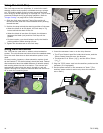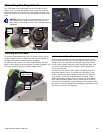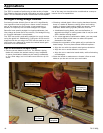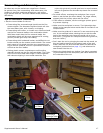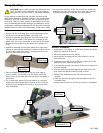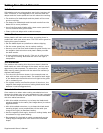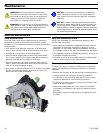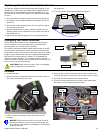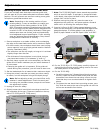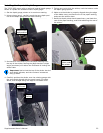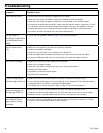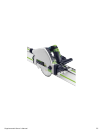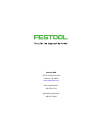
Supplemental Owner’s Manual 19
Cutting Non-Wood Materials
Soft Plastics
Soft plastics such as polypropylene won’t chip, but they will
melt. Therefore, a more aggressive cut with the blade set
deeper and the motor speed set low will reduce the melting.
► Too shallow of a blade depth and the plastic will be more
prone to melting.
► Too deep of a blade depth and the teeth marks from the
blade will be more prevalent.
► Any of the ne-tooth blades with a slow motor speed will
cut this material with good results.
► Clean up the cut edges with a cabinet scraper.
Brittle Plastics
Brittle plastics will both melt and chip, so cutting them is
problematic with most other saws. The TS55 works great for
cutting this type of material.
► Set the blade depth very shallow to reduce chipping.
► Set the motor speed very low to reduce melting.
► Use any one of the ner tooth blades for good results, but
the negative hook aluminum and plastic blade provides
the best results.
► In clear plastics such as acrylic, if the cut is milky white,
it is a sign of melting. Note how the cut to the right is
transparent.
Thin Aluminum
The problem with cutting thin aluminum sheet is that the
blade teeth can catch the edge of the sheet, and cut more
aggressively than expected. To reduce this, you want the
teeth moving nearly parallel with the aluminum surface (a
shallow blade depth).
► The ultra-thin aluminum shown in the example was cut
best with the ne crosscut blade. The positive hook angle
of the blade kept the exible aluminum tight to the guide
rail in a sheering cut.
► For slightly thicker, less exible pieces of aluminum, the
negative hook angle, aluminum cutting blade works best
because it cuts less aggressively.
Extruded Aluminum
Care needs to be taken when cutting extruded aluminum
because the blade may cut more aggressively than expected
on the various surfaces of the stock. This is most noticeable
with thin-walled extrusions.
► With thin-walled extrusions, try to keep the blade teeth
traveling parallel to the walls (see image above) to reduce
aggressiveness.
► With thick-walled extrusions, try to keep the blade teeth
traveling slightly more perpendicular to the walls (see
image to the right) to decrease loading.
► Use the negative hook angle, aluminum-cutting blade, and
a moderate to high speed setting.
► Be prepared for the blade to catch unexpectedly as the
cutting angle changes with each facet of the extruded
shape.



